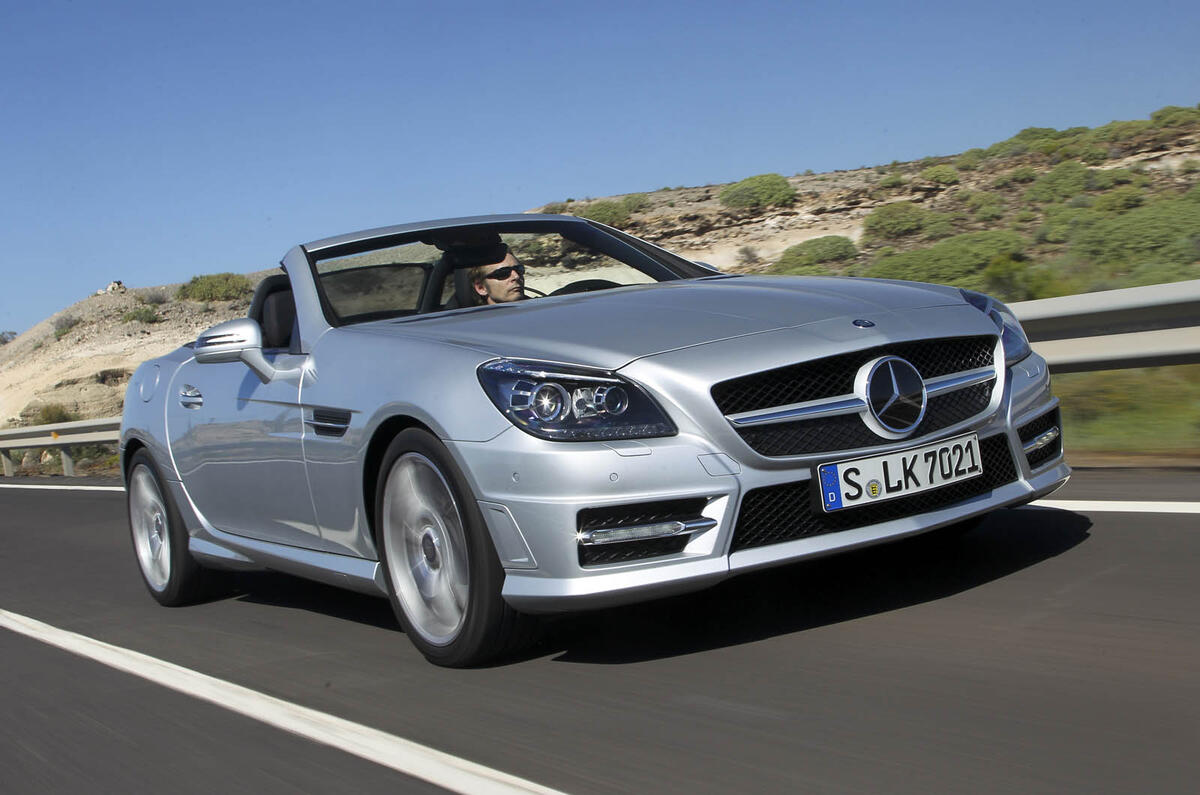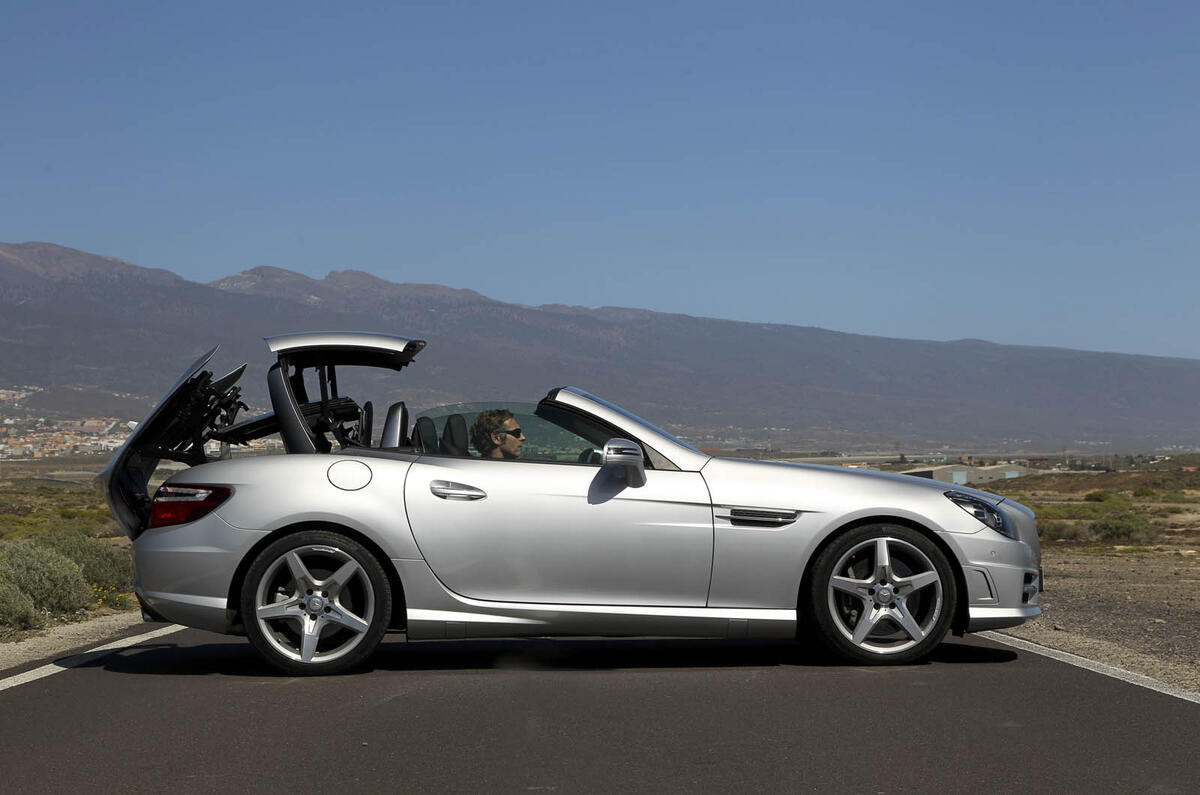What is it?
Mercedes-Benz is making some big promises about its new SLK. This third-iteration two-seater, they say, represents a much larger evolutionary step forward than the second, and possesses greater sporting appeal than its predecessor.
What’s it like?
Dimensionally, the new roadster has grown: length is up by 31mm, width by 33mm and height by 5mm. Its rear-wheel drive chassis is a development of that used by the outgoing model, with the same 2430mm wheelbase but wider tracks.
Inside, the new SLK feels roomier than its predecessor, largely thanks to its added width, which frees up shoulder room. The design of the dashboard, instruments, controls, air vents and centre console borrows various aeronautical themes from the SLS. It’s nicely laid out and an improvement on the old car, if a little heavy on hard plastics.
One of the most impressive things about the new SLK remains its folding hard-top roof. Now it has a lightweight magnesium frame and a new electronic mechanism for faster operation, taking less than 20 seconds to open up.
Mercedes plans to introduce three SLKs to the UK in June: the SLK 200 with a 181bhp turbocharged 1.8-litre petrol engine, the SLK 250 packing a more highly tuned 201bhp version of the same four-cylinder unit, and the SLK 350 running Merc’s new normally aspirated 3.5-litre V6 with 302bhp. Later in the year there will also be an SLK 250 CDI with a 201bhp 2.2-litre diesel – the first oil-burner in an SLK – as well as the SLK 55 AMG, which gets a new 422bhp normally aspirated version of AMG’s new 5.5-litre V8.
The engine in the SLK 250 we’re testing, which will account for a significant chunk of UK sales, seems well suited to the car, providing gutsy performance across a wide range of revs and greater levels of top-end smoothness than you’d expect from a four-pot.
With 228lb ft of torque at 2000rpm, the new powerplant pulls heartily from low revs and reaches its 6200rpm cut-out without strain. Its best work, however, is done through the mid-range, where a combination of forced induction and direct injection technology provide impressive flexibility.
The new engine comes mated to a standard six-speed manual gearbox, although most buyers will opt for the seven-speed automatic – as fitted to our test car. Despite the inclusion of all the fuel-saving technology seen on other new Mercedes-Benz models – standard stop-start, brake energy recuperation and a disengaging alternator – the SLK’s steering retains electro-hydraulic assistance, and at just 2.2 turns lock to lock it’s a good deal quicker than before.
But despite all the hype, the new SLK really doesn’t deliver the leap in sportiness Mercedes led us to expect. It’s well balanced with good body control, but it just doesn’t engage or reward the driver in quite the same way as some of its rivals.
In a broader sense, though, it still feels very accomplished. At a steady high-speed cruise the SLK 250 has impressive refinement, and ride quality is excellent. The new model receives variable damping control, and in comfort mode it is surprisingly supple. A stiff body structure, which incorporates a new cross-member located behind the seats, provides the basis for the smooth progress.

















Join the debate
Add your comment
lovely model. i love it. i
lovely model. i love it. i cant decide between this and z4.
Re: Mercedes SLK 250
Are you on drugs?
Re: Mercedes SLK 250